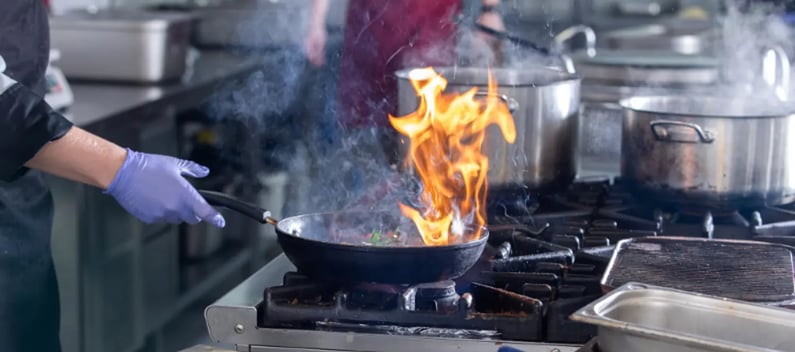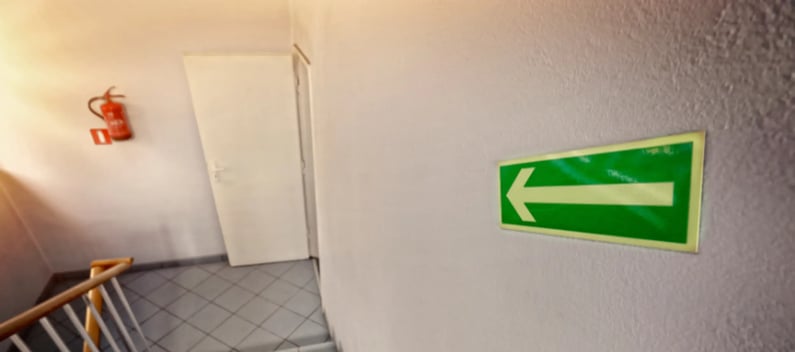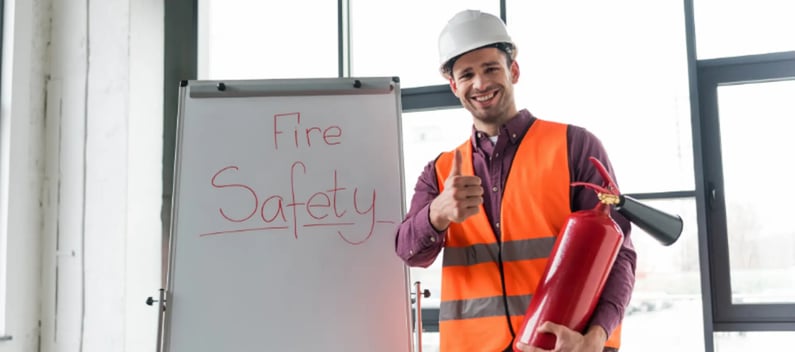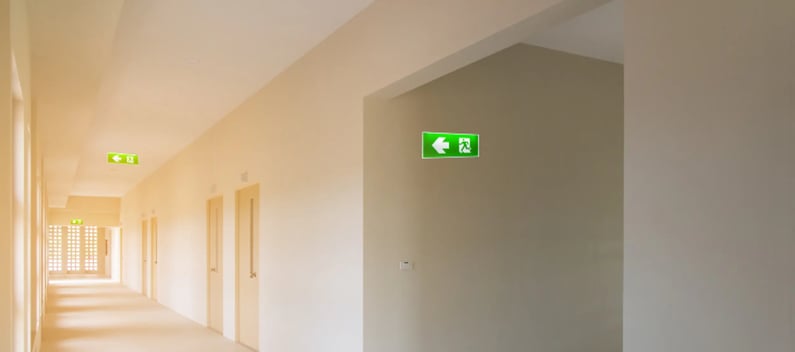Over the past decade, over 11,000 front-line fire-fighting jobs have disappeared. Having experience with fire safety practices in the current climate is important, doubly so, if not more, for those care homes, especially given that there is specific legislation in place. This article seeks to outline some general fire safety guidance, before delving into what is required in a care home setting.
Preventing Fires
Obviously, the safest method of dealing with fires is to simply take steps to prevent them. The leading causes of fires are faulty wiring and power outlets, yet these are also arguably the most easily avoided fires.
Check all the cords in your home for signs of fraying, making a point to replace damaged wires. Also make use of surge protectors, which will help prevent them from catching fire should there be power spikes. Whilst rugs can make a nice decoration, they should never be placed over wires. At the very least, they shouldn’t pinch the wires.

Kitchen fires can be caused by burning grease or residue.
The kitchen is also a frequent source of fires, most of which are also preventable. Built-up grease or residue can ignite, so frequently cleaning cooking appliances is important. Unfortunately, the easiest way to prevent kitchen fires is the most often neglected way; never leaving pans or pots unattended. Keep an eye on any cooking, and you can stop an accident from occurring.
Another household utensil that is often the cause of fires is the dryer. The tips for electric wires apply to dryers too, but they also have their own special requirements. The lint filter must be cleaned after every load, as otherwise, it will eventually overheat, causing a fire to ignite. Likewise, check for any build-ups of dust behind or beneath the dryer. You should also clean the dryer vent out regularly.
The final major cause of residential fires comes from heating systems. A building that uses classic fireplaces should have its chimneys cleaned on a regular basis since doing so allows the heat and ashes to rise without clogging and causing the heat to start a fire.
It is extremely important to use the correct fuel for the fire as well: damp wood; cardboard; trees; paper; and boxes are all fuels that can easily spark chimney fires, and so should always be avoided. Pellet or wood stoves should, ideally, be installed by a professional. If space heaters are used, they must be kept away from clothes and flammables. As a warning, if there is ever a smell of gas, don’t risk using the space heater.
Fire Safety in the Care environment
The Government provides a guide (available for download here: www.gov.uk) that is to be used by permanently staffed premises providing residential care. This applies to residential/nursing homes, rehabilitation premises providing residential treatment and care for addiction, and care homes (with or without nursing).

Fire safety measures in care homes should consider that elderly and vulnerable patients will need assistance.
Fires in a care home are possibly more serious than fires in normal residential buildings, as the elderly and vulnerable are less able to escape a fire without assistance. As such, legislation known as ‘The Regulatory Reform (Fire Safety) Order 2005’ was put into place, which served to simplify and clarify the requirements of non-domestic places in terms of fire safety. The requirements of this legislation are laid out below:
Fire Risk Assessment
As outlined above, you are required to have a fire risk assessment if operating a care home. If there are more than 5 people on the premises, this must be written down. It must be reviewed annually, and every time there is a significant change to your premises or residence.
Firefighting Equipment
You must maintain on-site the correct types of fire extinguishers, certified by industry standards. They should be serviced annually. In terms of a care home, it is important to make sure that the equipment you use is operable by weaker persons. Our Fire Safety Awareness course covers aspects of fire extinguisher training.

Fire Safety training teaches the uses of safety equipment such as fire extinguishers.
Fire Safety Signs
Often overlooked, fire safety signs are required for a building to be legally compliant with legislation. Examples of these signs include fire exit signs, warning prohibition signs, extinguisher ID signs, and fire alarm call points.
Fire Alarm Systems
These should be tested on a weekly basis and serviced every 6 months. Care homes need to have an ‘L1’ fire alarm system (the type that gives the highest level of cover), which is automatic and provides detection in every room. These allow plenty of time to begin evacuating occupants.
Emergency Lighting
The legislation stipulates that there be adequate emergency lighting systems, which will kick in should the electricity die or be switched off during a fire. Recommended for any room above 60 square metres in size, these lights illuminate exit routes, provide cover in communal areas to minimise panic, and allow dangerous equipment to be turned off. Emergency lighting should be ‘flick tested’ once a week (simply turning the lights on then off), as well as having a 3-hour test annually, wherein the building’s power is turned off to see if the emergency lights will last.

Fire Safety Training
It is expected that all staff know what to do in the event of a fire, with new staff taught as soon as possible and refreshers for all staff given on a yearly basis. Regular drills are to be carried out, and fire marshals (responsible for making contact with emergency services, operating extinguishers, and assisting with evacuation) are to be appointed. It is preferable for them to be trained by professionals.
In a care setting, evacuation training should also be provided. Whilst this typically covers the standard evacuation procedures anyone who has ever done a fire drill is familiar with, a care setting requires ‘horizontal evacuation’. In part, it requires moving groups of occupants ahead of fires (sealing fire doors behind them) to allow time to safely and efficiently evacuate vulnerable persons. It also requires that staff be comfortable in using evacuation aids, such as evacuation chairs or mattresses.
For further information, visit our Fire Safety training page for both our Fire Marshal course and Fire Safety Awareness course both available via e-learning and other learning methods.

-1.webp?width=243&height=74&name=Logo%20R%20Homepage%20White%20Final%20Horizontal%20Large%20NEW%20small%20(2)-1.webp)

-1.webp?width=50&height=59&name=Cyber%20Essentials%20Badge%20Large%20NEW%20(72dpi)-1.webp)
COMMENTS